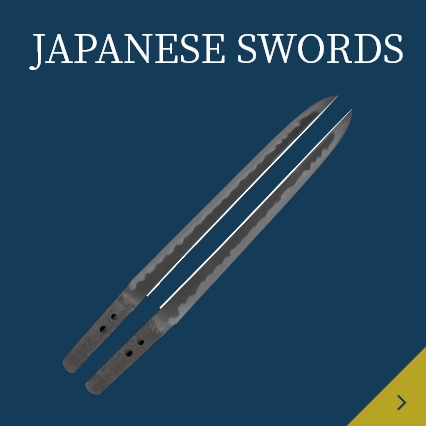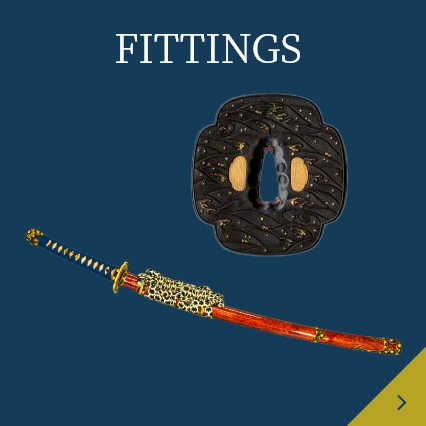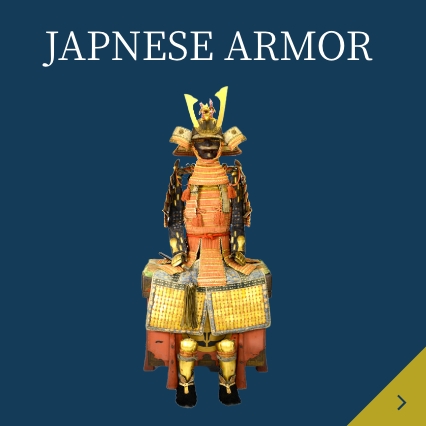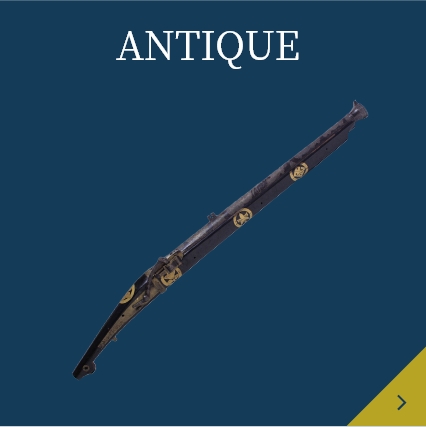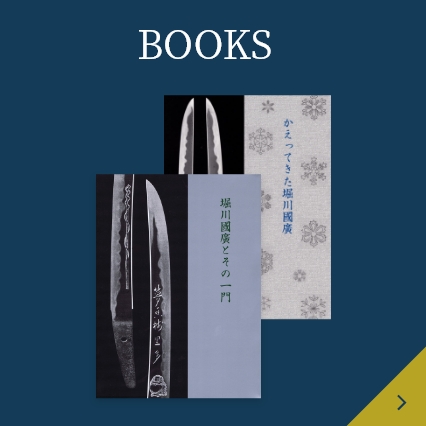Norishige Tanto's finest masterpieces
Fujishiro Meito zukan published
(Tanto)Norishige
(Accessory)Kurourushinuri makie aikuchi tantokoshirae kin-urushi sign Nagata Syusui(Kao)
Kurourushinuri Mizuno omodaka makie Box
短刀 銘 則重
| Item NO. | No,K00238 | Price | Please contact us Consignment Items |
|---|---|---|---|
| Paper | No,23 NBTHK Tokubetsu juyo Paper (公財)日本美術刀剣保存協会 第23回特別重要刀剣指定書 | ||
| Country | Etchūcountry | ||
| Period | Kamakura Period,13th-14th century | ||
| Blade Length | 23.8cm /9 3/8in| | ||
| Curve(Sori) | Uchizori | ||
| Bottom Width (Motohaba) | 2.05cm/13/16in5 | ||
| Bottom Thickness (Motokasane) | 0.5cm/13/64in | ||
| Keijo | Hirazukuri, mitsumune, fuku-ra yaya kare-gokoro to nari,mu-ne no oroshi ga kyūdearu | ||
| Kitae | Itame ni moku-majiri, bubun-teki ni hada tachi,-chi nie mijin ni atsuku tsuki,-chi kei yoku hairu | ||
| Hamon | Sōjite yaki takaku,-shō no tare-chō ni Tagai no me-gokoro no ha-majiri, ashi ha-iri, nioi fukaku, nie atsuku yoku tsuki,-chi ha o mataide kinsuji niesuji sunagashi shikirini kakari, hada-me ni sotte yubashiri o medatte majie, moto saki ni kakete mune o yaki, isshu no kai yakiha no yō sō o teishi, nioikuchi akaruku saeru | ||
| Boushi | Midare-komi,-hyō wa nie tsuyoku shima jinjō o shimeshi, ura wa hotondo nie kuzurete sakan ni haki kake, kaen-jō to naru | ||
| Nakago | Ubu,Saki-haagarikurijiri,Yasurime Unclear,Hole 1 | ||
| Accessories | Shirasaya(Kunzan-sign),)Kurourushinuri makie aikuchi tantokoshirae kin-urushi sign Nagata Syusui(Kao),Kurourushinuri Mizuno omodaka makie Box | ||
| Details | Sword books from the Edo period, such as "Kokin Mei-jin," list Norishige as one of the Ten Masters of Masamune, but considering the appearance of his tachi and tanto, and the dates of production from Masakazu and Gen'o, it seems appropriate to accept the theory in sword books from the Muromachi period that he was a disciple of Shintogo Kunimitsu, and he should be considered a fellow disciple of Masamune. Norishige's style is similar to that of Sagami-joko-naka Masamune, but he has many works that express the changes in the nigiri more clearly than Masamune, and the forging has a much larger pattern, and the unique texture unique to the same craftsman, known as "pine bark skin," is characterized by the prominent thick ground lines, and various effects related to the forging surface can be seen on the edge and middle of the blade, showing the ever-changing effects of the nigiri. This tanto has a normal width and a bamboo-shoot-like curve, typical of this craftsman, with jigane (jigane) mixed with itame and mokume, fine and thick ji-zeki (ji boiling), good ji-kei (jikage), a notably high hamon (hamon), a small curvature mixed with a pattern of zigzag and small zigzag, a bright and clear ashi-iri (foot marking), nioi-kuchi (nioi-guchi), frequent kinsuji (kinasuji), zeki (sunagashi) and sunagashi (sand nagashi), and abundant yu-bashiri (traditional Japanese ferrous metal) along the texture, all showing typical and outstanding workmanship of this craftsman. The thick ji-kei (jikage) is noticeable, and the well-crafted itame forging is a perfect example of "matsukawahada (pine bark skin)", and the beautiful, shining ha-zeki (bamboo boiling), typical of Sagami-den shokunin (sōshū-den shokunin), is evenly and thickly applied, fully expressing the beauty of the zeki all over the blade, with large and frequent flashes of kinsuji (kinasuji), zeki (sunagashi) and sunagashi (sand nagashi) across the jibaba. The style of this work fully displays Noriyoshi's talent, and what's more, it is in extremely good condition. 『古今銘尽』等江戸期の刀剣書は、則重を正宗十哲の一人として挙げているが、太刀や短刀の姿形、及び正和や元応の制作年紀があることなどからすれば、室町時代の刀剣書に述べている新藤五国光門下説を認めるのが妥当と思われ、正宗とは相弟子と見るべきであろう。則重の作風は、相州上工中正宗に近似するが、彼は正宗以上に沸の変化を露に表現したものが多く、鍛えは一段と大模様に肌立ち、いわゆる「松皮肌」と称される同工特有の個性溢れる肌合いに、太い地景が目立って入るところに特色があり、また刃境や刃中にも鍛えの肌にからむ様々な働きが看て取れ、千変万化の沸の働きをあらわしている。 この短刀は、身幅尋常で筍反りとなった同工特有の短刀姿を示し、地鉄は板目に杢目が交じり、地沸微塵に厚くつき、地景よく入り、刃文は目立って高く、小湾れ調に互の目・小互の目ごころの刃が交じり、足入り、匂口明るく冴え、金筋・沸筋・砂流し頻りにかかり、肌目に沿って湯走りを夥しく交えるなど、同工の典型かつ出色の出来栄えを示している。太い地景が目立って入り、よく練れた板目鍛えは「松皮肌」の標本ともいうべきもので、さらに相州伝上工特有の光美しい輝く刃沸は、むらなく厚くついて刃中一面に沸の妙味を存分に表しており、金筋・沸筋・砂流しが地刃をまたいで大模様かつ頻りに閃いている。本作が示す作風は則重の真骨頂を余すことなく示しており、加えて保存状態が頗る良好な一口である。 |
||

CONTACT
SEARCH
-
PERIOD LISTS
Koto|Shinto|Shinshinto|GendaitoPRICE LISTS
~¥500,000 JPY|¥510,000 JPY~¥1,000,000 JPY|¥1,010,000 JPY~¥2,000,000 JPY|¥2,010,000 JPY~¥3,000,000 JPY| ¥3,010,000 JPY~¥4,000,000 JPY|¥4,010,000 JPY~¥5,000,000 JPY|¥5,010,000 JPY~¥10,000,000 JPY|¥10,010,000 JPY~ |Please contact us -
PAPER LISTS
Important art appraisal|Others|No appraisalJpanese Swords
NBTHK Tokubetsu Jyuyo|NBTHK Jyuyo|NBTHK Tokubetsu Hozon|NBTHK HozonFittings
NBTHK Tokubetsu Jyuyo|NBTHK Jyuyo|NBTHK Tokubetsu Hozon|NBTHK Hozon


